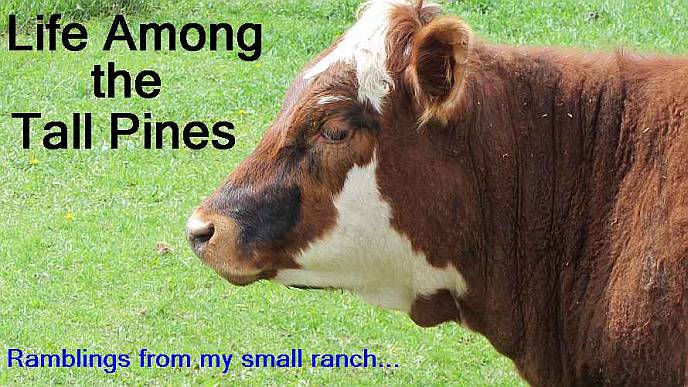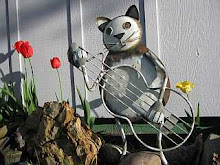So I had a big move today of pipes from almost half way across the pastures over to the hayfield. The first line of pipes went fine. It took an hour to move them. I had to then adjust the length and add a half length pipe from elsewhere. I found that the south/middle fence - and therefore the mainline of pipe - are not perpendicular to the outer fences. As I move down the line I have to add or subtract pipes to the length of sprinkler pipes.
Then I had to replace two old valve 'caps'. That is, the rubber seals on the risers on the mainline pipe. I have been replacing the caps as needed. A few old caps still seal, most don't. Most old caps seal until they are opened for the first time in a very long time.
Replacing the caps when the pump is pumping water is tricky. It is best to do this on a hot day. I have a board to block most of the spray from me getting soaked, but I still get wet.
I anticipated one cap would have to be replaced and already had a new cap with me. But with two caps I had to go back home and get another cap.
A problem with replacing the caps - other than getting wet - is that cotter pins holding the caps in place are old and the tails often break off when removing them. Often I still have enough of a tail I can reuse the cotter pins. On one cap I found the new cap was just thick enough to mostly cover the cotter pin hole. It took some effort to get the cotter pin back in the hole.
The other cap had both the cotter pin tails and the head break off. I had to take the unit back to the workshop and drill the remainder of the old pin out. First I tried to use a nail to drive the pin out of its hold but the nail would bend. I tried a small drill bit but it broke. Finally a second larger drill bit got the pin out.
All this took time. Then I had to move the second and longer sprinkler line.
So what should have taken a little over two hours took almost four hours. As all I had to eat at this time were two apple fritters Donna dropped off after she attended church, I was hungry. After eating I slept. I woke up more tired than when I fell asleep. Then I went back to working more on the south fence rebuild - until the darkness and mosquitoes made me quit for the day.
 |
| It gushes like this even with two sprinkler lines open elsewhere. Makes it hard to screw the cap back on. |
 |
| The cap with the broken cotter pin. |
Earlier in the week I had another leaky problem. When Donna and I did the last big move I had shut off one sprinkler line to move it but did not also open a third valve to release some water pressure. The corner (seen below) held in place, though a few slow leaks softened the ground to allow a little movement of the metal rods holding the corner in place.
The next junction is what partially came apart. As you can see the steel pipe with the half circle catch is made for a regular steel pipe (see in previous photo), not a pipe with a riser. To compensate I added wire to help hold the pipes together.
Dad added hooks to some steel pipes to allow two pipes to hook together. But he didn't have enough hooks for all pipes. I had the misfortune to have placed a hookless pipe near the end of the mainline.
The increased water pressure from shutting down one sprinkler line while the pump ran caused the wire to break and the pipe to come partially apart. The water didn't gush up but went along the sides of the pipe and down. The area is also a porous area and the water soaked in the ground and did not form a lake. So I didn't notice the leak for a few days.
I had to shut the pump off to fix the leak. Fortunately when I restarted the pump it immediately started to pump water.
I am still working on the south pasture fence rebuild. The cattle are still happy in the north pasture so I am taking advantage and trying to complete the entire rebuild. Some days are more productive than others. Clear and hot 90+ degree days have slowed me down.

















































